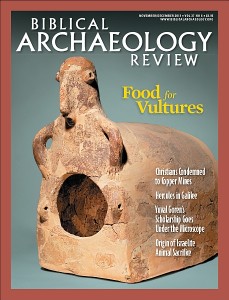The Roman world that surrounded first-century C.E. Judea abounded in statuary. Elegantly carved marble images of gods, warriors and emperors filled the halls and bathhouses from Alexandria to Damascus. Even some of Judea’s cities, like the extravagant port of Caesarea Maritima built by Herod the Great, included temples and monuments adorned with pagan representations.
For Jews, such statues were an abomination, a direct affront to God’s commandment not to make graven images. But far from being the elegant white yet cold and lifeless works of art we see in museums today, these incredibly lifelike images were often painted in bold, vibrant colors (as was the depiction of Hercules recently discovered at Hippos/Sussita).
“It is interesting to think about what kind of charge [these statues] must have had for Jews of the time,” said Peter Schertz, the Jack and Mary Ann Frable Curator of Ancient Art at the Virginia Museum of Fine Arts (VMFA), adding that the “Jewish prohibition against idolatrous images must have made the appearance of classical statues both very frightful and, for some, somewhat seductive.”
Already a library member? Log in here.
Institution user? Log in with your IP address.

